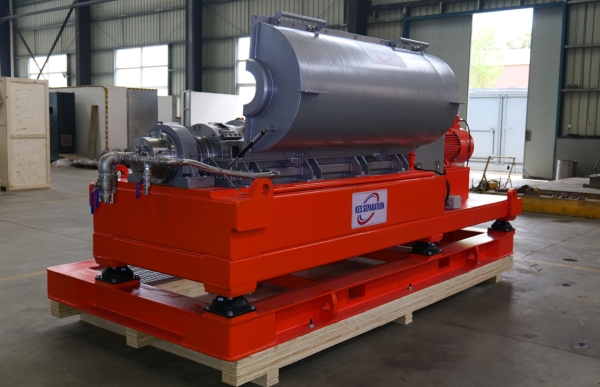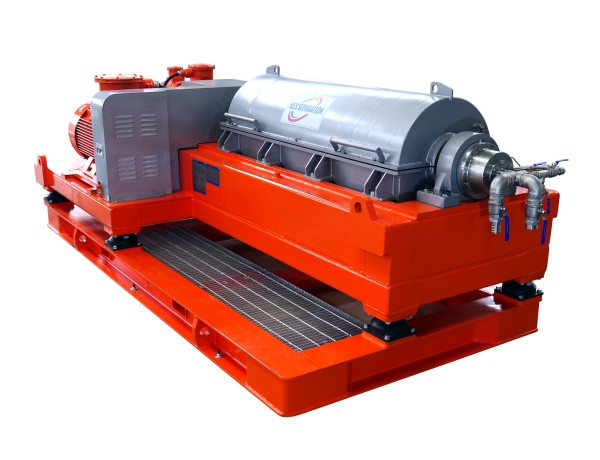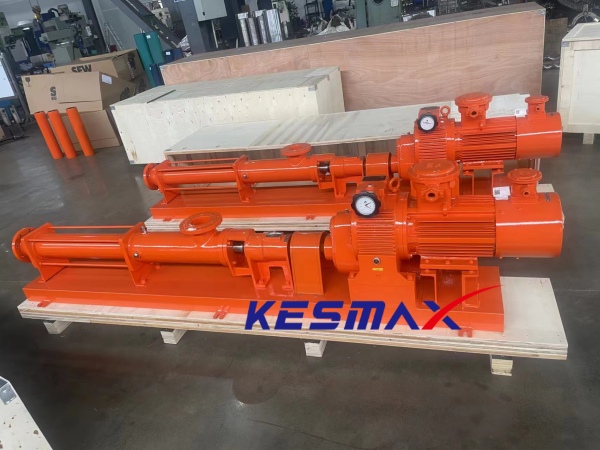

In a solids control system, mud centrifuges provide the last line of defense in keeping your drilling fluid system performing at optimum levels while reducing waste and ensuring compliance with environmental restrictions. Dedicated, focus and insist on help us to grow more professional in the design and manufacturing of high-quality decanter centrifuges. For the recent order, the client would like to have an increased capacity to treat the mud faster and the client chose 18in big bowl big volume capacity as the optimal choice.
1) Technical parameters comparison between KSLW4534 centrifuge & Derrick centrifuge.
|
Brand |
KES Separation |
KES Separation |
Derrick Centrifuge |
|
Model |
KSLW4534 |
KSLW3635 |
DE1000 centrifuge |
|
Bowl diameter |
18in |
14in |
14in |
|
Bowl Length |
61in |
49in |
49in |
|
Bowl Length/Diameter |
3.4 |
3.5 |
3.5 |
|
Max Speed |
3600rpm |
3900rpm |
3600rpm |
|
Max. G force |
3265 |
3066 |
2612 |
|
Normal operation speed |
2000~3200rpm |
2000~3200rpm |
2000~3200rpm |
|
Driven type |
VFD or FHD |
VFD, FHD |
VFD, FHD or gearbox |
|
Main motor |
45kw |
37kw |
37kw |
|
Back drive motor |
15kw |
11kw |
11kw |
|
Feed pump motor |
7.5kw |
5.5kw |
- |
Having a deep understanding of centrifuge design can help you to understand the operation and flow rate easily. Many suppliers emphasize in the hydraulic flow rate which is useless to the users. The actual treating capacity depending on the concentration, density, viscosity of the feeding slurry. For drilling mud solids control, the actual capacity is about 10~15m3/h for 14in centrifuge and about 15~30m3/h for 18in big bowl centrifuges. To find the actual feeding rate, we recommend the user install flow meter in the outlet of the feeding pump, and close the bypass port, and only have one feeding port the centrifuge for a test.

2) Technical Features of our top-quality drilling mud centrifuge

3) The way to choose suitable feed pump to centrifuge operation
Step 1: to check the bowl diameter and bowl length of the centrifuge. Big bowl centrifuges can work with big feeding rate pumps.
Step 2: to check the material or work condition, it might be drilling mud, waste sludge, oily sludge, waste water etc. the high concentration, high viscosity of the feeding slurry, the lower of the feeding rate.
Step 3: to decide the pump type working for centrifuge. There are different pumps suitable for feeding centrifuge, vertical slurry pumps, single screw pump and rotor pumps. Vertical slurry pump and centrifugal pumps are not recommended because of the un-stable feeding pulse. Both single screw pumps and rotor pumps are Positive displacement pump, they both can provide stable feeding fluids, no pulse feeding, can minimize the effect of centrifuge separation performance. However, the rotor pump price is relatively higher price than single screw pump. And we can see a lot of single screw pumps working with decanter centrifuges at work site. The popular single screw pump in global market is NOV brandt Mono pumps and Germany Netzsch brand nemo pumps. We sourced a lot of Nemo pumps to work with our centrifuges.
Step 4: to decide the flow rate, feeding lift of the screw pump. We usually adopt 20m3/h for feeding 14in centrifuge and 30m3/h for feeding 18in big bowl centrifuges. The final model selection depends on the material and working condition.

As a professional supplier of solids control & drilling waste management equipment, it is our mission to support client with assured quality solids control equipment and affordable price. Welcome to contact us for details discussion, and we are sure satisfactory proposal can be achieved after details communication.